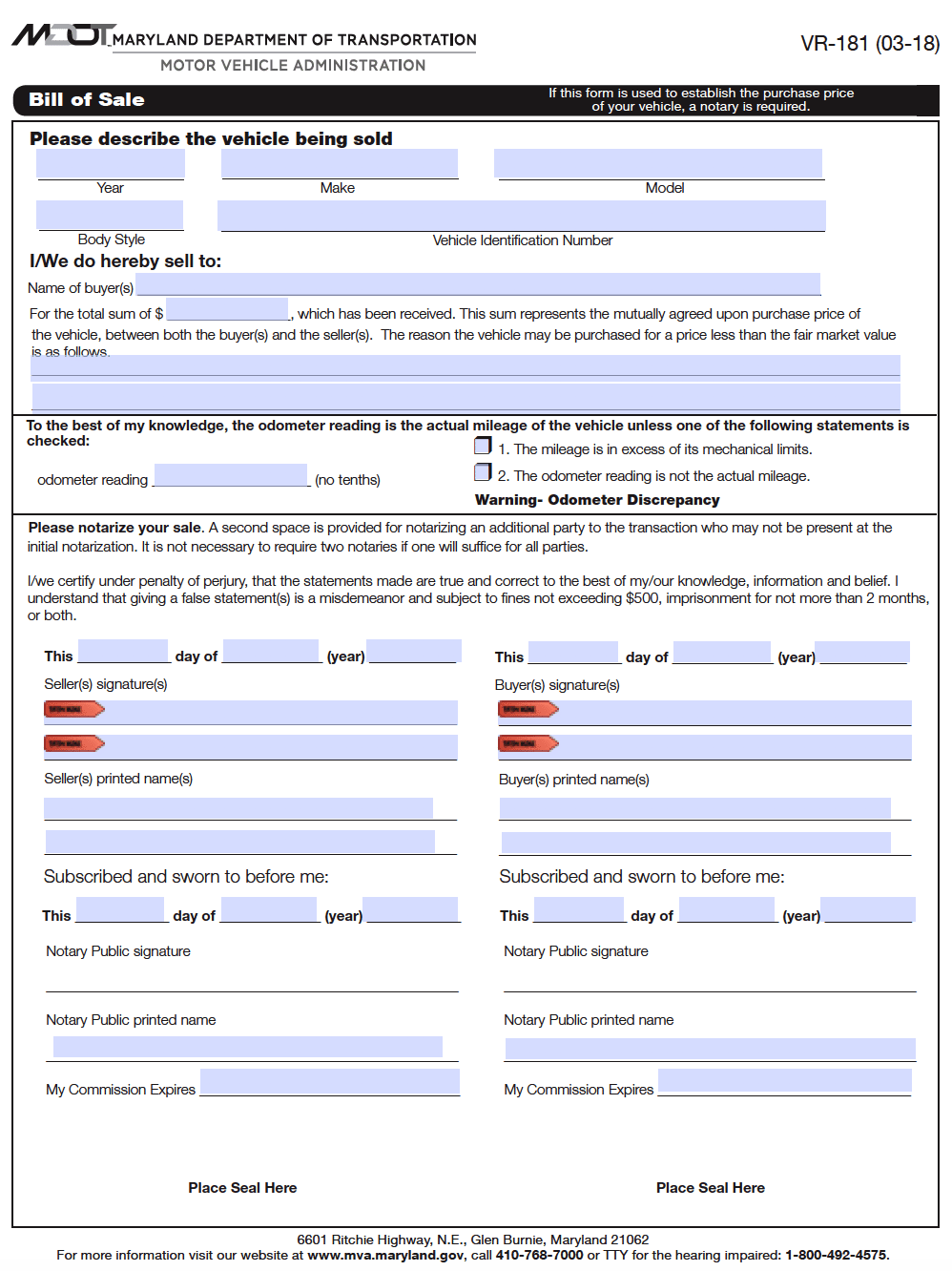The Maryland DMV bill of sale form (Form VR-181) is a legal document demanded by law in the state of Maryland. If purchasing a vehicle from a dealership, it is their obligation to present you with a copy of the form. When dealing with the purchase and sale of a private party transaction, the individuals involved must execute the contract as well. It also adds an extra layer of protection in the event of a disagreement. Crucial information such as the purchase price, mileage, and vehicle description are all recorded to the form creating a tangible piece of documentation proving that a transfer of personal property eventuated.
How to Register a Vehicle
Maryland requires you to register your vehicle before you can drive on any public roads. To do so, visit your nearest MVA (Motor Vehicle Administration) office and be sure to bring:
- The bill of sale attained from the dealership or private sale.
- A signed-over vehicle title (if it is a Maryland issued title, utilize it as an application form).
- A valid Maryland Safety Inspection Certificate acquired by visiting a licensed Maryland inspection station for vehicle examination (only remains effective for 90 days after inspection).
- A Maryland issued driver’s license.
- A filled out and signed copy of the Application for Certificate of Title – form VR-005 (this application encompasses registration and titling).
- Proof of a Maryland auto insurance policy.
- A completed Odometer Disclosure Statement (you also have the option of writing the statement on the back of the title).
- Necessary resources to appease any registration/tax payments.
How to Write
Step 1 – Download in Adobe PDF.
Step 2 – Vehicle Description – Fill in the required fields below:
- Year
- Make
- Model
- Body Style
- VIN (Vehicle Identification Number)
Step 3 – Sale Information – Enter the following information regarding the sale:
- Buyer(s) Printed Name
- Total Sum (in dollars) of the Selling Price
- If the price is less than the fair market value, list the reason why in the subsequent space below.
Step 4 – Odometer Reading – This section instructs you to provide the necessary information listed below:
- The Vehicle’s Odometer Reading (mileage, no tenths)
- If you cannot provide the actual mileage, select one of the following boxes, “The mileage is in excess of its mechanical limits.” or “The odometer reading is not the actual mileage.”
Step 5 – Buyer and Seller Signature Section – This section informs both parties that by signing this document, they certify under penalty of perjury, that the statements made are true and correct to the best of their knowledge, information, and belief and also understand that giving a false statement(s) is a misdemeanor and subject to fines not exceeding $500, imprisonment for not more than 2 months, or both. If both parties agree, they must provide:
- The Date (day, month, year)
- Signature(s)
- & Printed Name(s)
Step 6 – Notary Section – Notarization is legally required if:
- The selling price is less than the blue book value by more than $500.
- You would rather have the excise tax adjusted to the selling price as opposed to the blue book value.
- Or if the vehicle is less than 7 years old.
A notary public will have to provide:
- The Date (day, month, year)
- Signature
- Printed Name
- the Date their Commission Expires
- and a Seal Placed in the Designated Area



0 comments
Comments are closed.